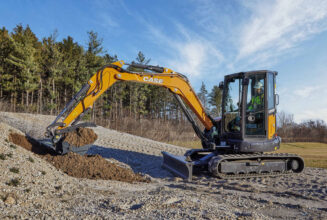Writing a Killer Spec’
By Robert “Bob” Johnson
At its most basic level, a work truck is a piece of equipment that helps your employees do their jobs. Since well-designed equipment enhances productivity, your objective when designing a work truck is to optimize the vehicle to achieve the best overall return for dollar spent. But three common mistakes can jeopardize your results and lead to a work truck that just doesn’t work. Here’s some advice on how to defeat these spec’ killers and write a killer spec’, instead.
Spec’ mistake #1: working out of order
Many people start the specification-writing process with the truck chassis, when it is actually most logical to address the body and equipment first. Think about it. An effective, productive work truck is designed to perform a specific job or series of jobs. Therefore, it makes sense to start the process by defining the job or jobs the truck will perform. From there, you can address the equipment and associated truck body needed to perform those tasks. Finalizing the body and equipment will define the vehicle’s required payload, necessary clear cab to axle chassis length and the loaded body’s center of gravity. This information enables you to select an appropriately sized chassis and perform an accurate weight distribution and payload analysis to determine the appropriate chassis. Finish by choosing the powertrain that meets your performance criteria.
Spec’ mistake #2: doing what you’ve always done
It’s an easy trap to fall into. You’re replacing an existing vehicle, so you figure all you have to do is duplicate the old unit. Not so fast. For starters, the current vehicle may not have been optimized for the job it is doing. In such a case, the end users probably figured out how to make it work as well as they could, but that does not mean you shouldn’t improve the new unit. Even if the vehicle was properly spec’d at the time it was initially acquired, requirements change and new/improved products are constantly being introduced. It is possible that there is a new body, chassis or piece of equipment that would offer significant improvements over what was previously available.
Chassis selection in particular should be carefully thought through every time. Chassis specifications change from year to year, so a current Class 3 chassis, for example, may not have the same net payload as an older Classis 3 chassis from the same OEM.
One of the challenges facing work truck designers is keeping up with these changes. To some degree, you can accomplish this by reviewing new product literature and reading industry trade journals. However, nothing really beats seeing the equipment firsthand and talking directly to representatives of the companies developing this new equipment. Annual events like The Work Truck Show are unbeatable resources for meeting with hundreds of vendors and checking out their latest products in just a couple of days.
Spec’ mistake #3: taking your best guess
After the preliminary selection of a suitable chassis has been made, perform a detailed weight distribution analysis to determine individual axle loadings. When necessary, optional axles, suspension components and frames may be required to ensure that the chassis is not overloaded and all equipment-mounting requirements have been met. Once the correct foundation components have been selected, it is time to move on to the powertrain (engine, transmission, axle ratio, etc.) and other components such as the electrical system, fuel tanks and cab content. All of these components have an impact on the completed vehicle’s overall performance and productivity, so it is important to make selections based on valid requirements.
In far too many cases, vocational truck designers make powertrain selections based on guesses instead of a careful analysis of horsepower and engine torque demands. Start by defining your performance criteria (road speed, starting gradeability, reserve gradeability, etc.) and then calculate your actual requirements. This will allow you to select the proper engine, transmission and axle ratio to ensure that the truck performs as required. The payoff in this process is a truck that has better fuel economy and lower maintenance costs.
The powertrain design process is not difficult, but is critical that you know how much the completed vehicle will weigh (including trailers for combination vehicles) and that you make realistic selections when establishing your performance criteria. Chassis dealers have access to sophisticated computer programs that will make these calculations for you, but the output is only as good as the information you put in.
Designing an integrated work truck is not difficult. It does require that you understand the design principles involved and that you research your requirements before starting the design process. If you take the time to write a killer spec’, you will be rewarded with a more productive, cost-effective vehicle.
Robert “Bob” Johnson is a former fleet manager and currently serves as director of fleet relations for the NTEA, The Association for the Work Truck Industry.


